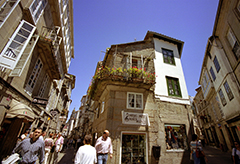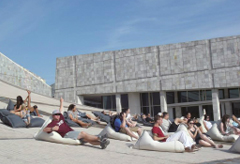The Camino de Santiago is the oldest, most popular and most celebrated route in Europe and it is the perfect place to study Spanish!
The first Cultural Route in Europe
Santiago de Compostela is the final stop of the Camino, it is one of the oldest, most popular pilgrimage routes in Europe and it was the first to be declared Cultural Route by the Council of Europe.
With its different itineraries, established by pilgrims throughout the centuries, the Camino de Santiago has largely contributed to the visibility of Santiago de Compostela all over the world.
Because Santiago de Compostela has gained international prominence thanks to the Camino, a route twinned with other renowned pilgrimage routes, like Kumano Kodo or the Shikoku route in Japan.
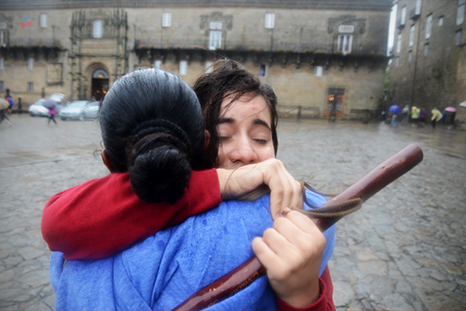
A warm welcome
The locals are friendly and welcoming, since they are used to the constant flow of pilgrims, who usually come on foot, but also on horseback or by bike.
In 2017, more than 300,000 pilgrims crossed the different itineraries of the Camino, and 55% of them were from foreign countries. In most cases, pilgrims walk the Camino for religious or cultural reasons, although there are other reasons. The passion for adventure, the communion with nature or with one’s inner self are also powerful reasons to walk the Camino.
Many describe this pilgrimage as a “special, intimate experience”. And, as a matter of fact, the Camino de Santiago may be a very different adventure for each person, depending on his/her personal circumstances and on the moment.
On many cases, the experiences pilgrims live on the Camino are closely linked to the amazing landscape of its different itineraries. And those amazing landscapes extend way beyond Santiago. In fact, many pilgrims decide to continue their way up to Finisterre, at the heart of Costa da Morte, the westernmost point of Europe.
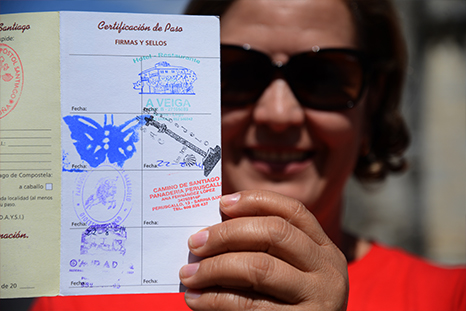
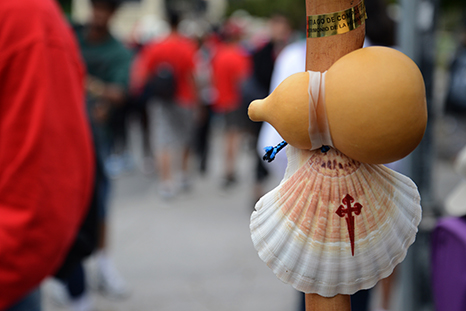
The credential: pilgrim passport
But both those who continue to Finisterre and those who don’t visit the Old Town as soon as they arrive in Santiago to contemplate its magic. There, they can stop by the Pilgrim's Reception Office (Oficina de Acogida al Peregrino, in C/ Carretas, 33), to obtain the Compostela, a document issued by the Catholic Church to certify that the person has walked the Camino.
In order to obtain this document you must complete 100 km on foot or 200 on horseback or by bike through any of the official itineraries; and prove it by means of your pilgrim’s credential, which must be duly stamped at the different stops of the Camino.
The pilgrim’s credential is therefore issued by the Church, or by different Associations of Friends of the Camino, confraternities or other entities and institutions authorised by the Cathedral of Santiago. You may even obtain it at some pilgrim hostels on the Camino.
The different itineraries
The different itineraries of the Camino pass up to nine sites or monuments declared Heritage of Mankind: the monasteries of Yuso and Suso; Burgos Cathedral; Atapuerca's archaeological site; the Vizcaya Bridge; the cave paintings in the Cantabric region; the pre-Roman monuments in Asturias and the Roman Walls of Lugo. And, of course, Santiago’s Old Town, the last stop of the Camino.
Although most of these attractions are on the French Way, this is not the only itinerary to get to Compostela. You may get to Santiago through different routes: the Portuguese Way, the Portuguese Way of the Coast, the Winter Way, the Northern Way, the Primitive Way, the Silver Way, the English Way or the Route of the Sea of Arousa and River Ulla.
If you want to plan your journey choosing one of these itineraries, visit the Camino official web site: www.caminodesantiago.gal/es/planifica/las-rutas
And also
LIVING IN SANTIAGO
A great small town!
USEFUL INFO
All you need to know!
10 REASONS
to study with us!
Top Links







